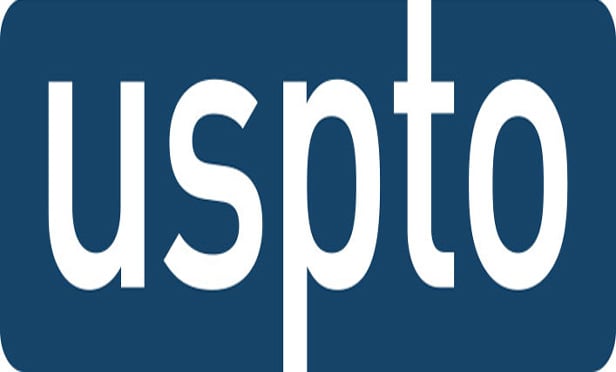Features

Patent Eligibility of User Interfaces
<b><i>Advances in UI Design Can Provide Key Competitive Differentiation and Advantage, Which Makes Protecting Them Critically Important from a Business Perspective</b></i><p>Advances in UI design can also provide key competitive differentiation and advantage, helping to distinguish otherwise commoditized products and services such as computers, Web services, wearables, and appliances. Given this advantage, protecting advances in UI design can also be critically important from a business perspective.
Features

How Disney Qualified for Design Patent for Marvel's Captain America Shield
Fans of movies about fictional superheroes are probably familiar with Captain America and his miraculous shield. Recently, however, his shield showed up in a most unlikely place: the U.S. Patent and Trademark Office (USPTO).
Features

Foreign Lost Profits Recoverable for Patent Damages
The U.S. Supreme Court recently held that a patent owner may recover lost foreign profits for infringement under 35 U.S.C. §271(f)(2). The holding in <i>WesternGeco LLC v. ION Geophysical</i> rejects the Federal Circuit's categorical exclusion of lost profits damages for foreign sales, and expands the potential for increased damages from domestic competitors operating in foreign markets.
Features

Sending Out an SAS: Analyzing the <i>SAS Institute Inc. v. Iancu</i> Decision
In a 5-4 decision, with four justices dissenting, the U.S. Supreme Court struck down the Patent Trial and Appeal Board's practice of instituting review on only a subset of an <i>inter partes</i> review (IPR) petitioner's validity challenges.
Features

Supreme Court Gives <i>Inter Partes</i> Review the Green Light
<b><i>Oil States Energy Services v. Greene's Energy Group</b></i><p>Is <i>inter partes</i> review of a patent grant compatible with Article III and the Seventh Amendment? That was the question presented in <i>Oil States Energy Services v. Greene's Energy Group</i> and the U.S. Supreme Court answered in the affirmative.
Features

A Reasonable Royalty Rate Must Be Tied to Facts
<b><i>Exmark Manufacturing Company Inc. v. Briggs & Stratton Power Products Group, LLC</b></i><p>The rate of the reasonable royalty awarded to a successful patent plaintiff must be based on the facts of the case. A damages expert cannot merely pay lip service to the <i>Georgia-Pacific</i> factors and then “pluck” a royalty rate from thin air.
Columns & Departments
IP News
Claim Preclusion Requires Analysis that Claims in Newly Asserted Patents are Patently Indistinct from Claims in Previously Adjudicated Patents<br>Claim Elements Taught by Prior Art for Purposes of Novelty and Obviousness are not Necessarily 'Well-Understood, Routine, and Conventional' Under §101
Features

Federal Circuit Holds That PTAB's Determination on Whether the One Year Time-Bar Is Triggered in <i>Inter Partes</i> Review Is Reviewable on Appeal
On Jan. 8, 2018, the Federal Circuit issued its significant <i>en banc</i> decision in <i>Wi-Fi One, LLC v. Broadcom.</i> In that decision, the Federal Circuit held that the time-bar of 35 U.S.C. §315(b) is reviewable on appeal, thus overturning a prior panel decision and opening the door for parties to challenge how the USPTO has interpreted and applied that statutory provision.
Features

An IP Protection Primer for Entertainment Tech Startups
The tech-heavy entertainment industry is an active field for tech startup companies developing potential patents and trade secrets. But many cash conscious startups are forced to initially neglect protection planning for these intellectual property assets, instead allocating scarce resources to set up and initial operation costs. This article suggests some practical and economical steps for startups, especially those with tight finances, to protect what may become valuable patents and trade secrets.
Columns & Departments
IP News
Federal Circuit Affirms Finding That Rembrandt's Patent Is Not Infringed by Apple's Accused Products<br>District Court Transfers Case after Federal Circuit Ordered It to Reconsider Party's Venue Objections In Light of <i>TC Heartland</i><brPTAB Decision Invalidating AIP Internet Network Patent Affirmed on Appeal
Need Help?
- Prefer an IP authenticated environment? Request a transition or call 800-756-8993.
- Need other assistance? email Customer Service or call 1-877-256-2472.
MOST POPULAR STORIES
- The DOJ's New Parameters for Evaluating Corporate Compliance ProgramsThe parameters set forth in the DOJ's memorandum have implications not only for the government's evaluation of compliance programs in the context of criminal charging decisions, but also for how defense counsel structure their conference-room advocacy seeking declinations or lesser sanctions in both criminal and civil investigations.Read More ›
- Law Firm Real Estate Strategy: Attorney Offices Are Out, Conference Rooms Are InLaw firms are navigating a paradigm shift in how they approach office space. With the rise of flexible workplaces, firms are finding that when their attorneys do come into the office, the main goal is to connect and collaborate with peers — and this shift has transformed how law firms address their real estate needs.Read More ›
- Use of Deferred Prosecution Agreements In White Collar InvestigationsThis article discusses the practical and policy reasons for the use of DPAs and NPAs in white-collar criminal investigations, and considers the NDAA's new reporting provision and its relationship with other efforts to enhance transparency in DOJ decision-making.Read More ›
- The DOJ's Corporate Enforcement Policy: One Year LaterThe DOJ's Criminal Division issued three declinations since the issuance of the revised CEP a year ago. Review of these cases gives insight into DOJ's implementation of the new policy in practice.Read More ›
- The DOJ Goes Phishing: The Rise of False Claims Act Cybersecurity LitigationWhile the DOJ Civil Cyber-Fraud Initiative is still in its early stages and cybersecurity regulations are evolving, whistleblower plaintiffs have already begun leveraging the FCA to pursue alleged noncompliance with government cybersecurity requirements.Read More ›
